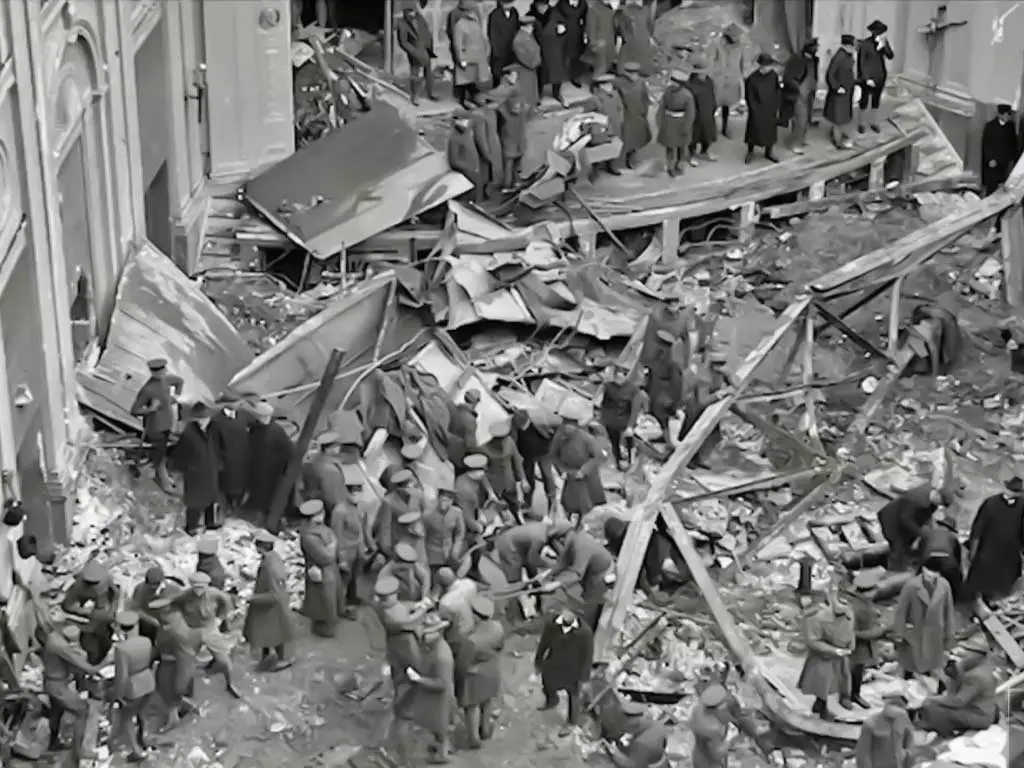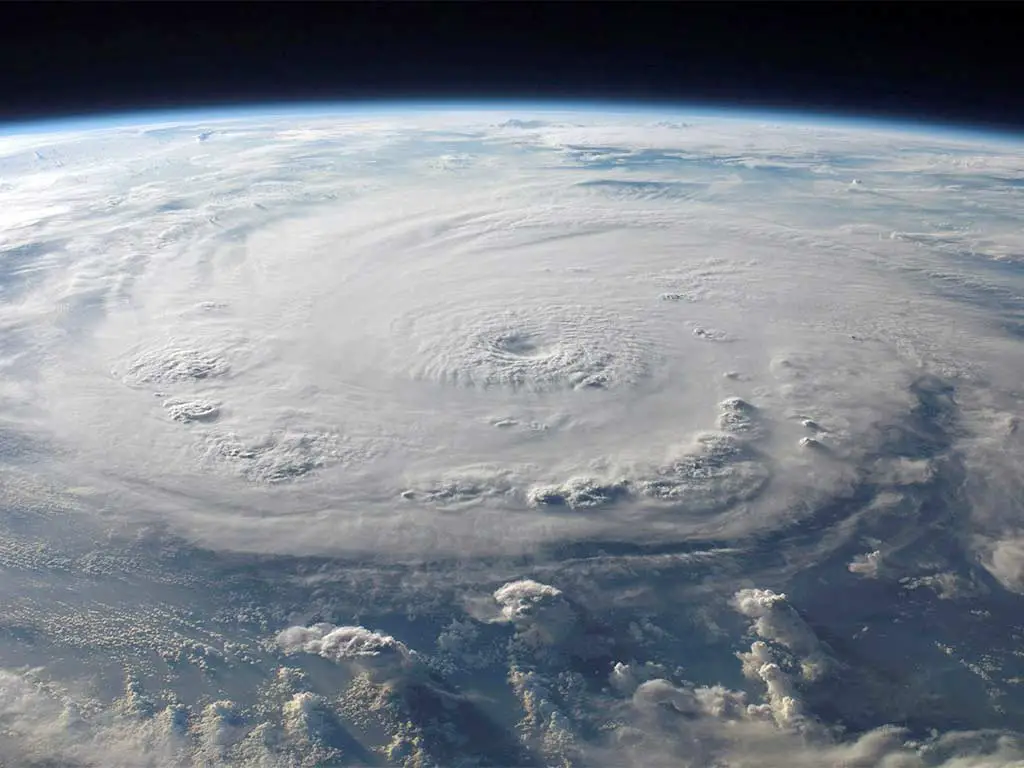When it comes to Washington DC’s history with hurricanes, the past is a powerful reminder of the potential threats these intense storms can pose.
As Hurricane Florence looms on the horizon, questions arise about its trajectory and the risks it might bring.
If history is any indication, the collision of a hurricane with the DC region could unleash a cascade of dangers, with flooding standing out as a particularly menacing force.
Hurricanes and tropical storms that venture inland after landfall bring with them a host of unique risks, with flooding emerging as a primary concern.
Once detached from their oceanic energy source, these systems can release torrents of rain over vast areas, amplifying the risk of inundation.
The aftermath of such events can leave a trail of devastation, as seen in past incidents where Washington DC narrowly escaped catastrophic flooding, underscoring the region’s vulnerability to nature’s fury.
Overview of Hurricane Impact in Washington DC

Washington, D.C., although not directly on the coast, can still be impacted by hurricanes and tropical storms, leading to various effects on the city and its residents.
Here’s an overview of the hurricane impact in Washington, D.C.:
Historical Context and Significance
When examining the historical context of hurricanes in Washington DC, it’s crucial to note that the region has a documented history of experiencing the residual impacts of intense storms.
While DC itself is not a coastal city, it is susceptible to the aftermath of hurricanes and tropical storms that move inland.
This susceptibility stems from its proximity to coastal areas and the potential for storm systems to maintain strength as they progress inland.
The historical significance lies in the lessons learned from past occurrences, emphasizing the need for preparedness and awareness despite not being directly on the coast.
Geographic Factors Affecting Storm Patterns
Geographic factors play a pivotal role in influencing storm patterns and their impact on Washington DC. The city’s location along the eastern seaboard exposes it to the trajectory of hurricanes making landfall in nearby coastal regions.
The Chesapeake Bay and Potomac River also contribute to the region’s vulnerability by providing pathways for storm surges and heavy rainfall to reach the area.
These geographic features can amplify the effects of hurricanes and tropical storms, heightening the risk of flooding and wind damage in the nation’s capital.
Understanding these factors is essential for developing effective disaster response strategies and mitigating the potential impact of future storms on Washington DC.
Notable Hurricanes in Washington DC History

Washington, D.C., although not typically the epicenter of hurricanes, has experienced significant impacts from several notable storms throughout its history.
Here are some of the most notable hurricanes in Washington, D.C. history:
The Chesapeake-Potomac Hurricane
In 1933, the Chesapeake-Potomac Hurricane struck the region, causing significant damage. Waters rose perilously close to the top stones of Georgetown’s Lock 3 following the storm’s impact.
This hurricane’s intensity and the resultant storm surge highlighted the vulnerability of the area to severe weather events.
Understanding the historical impact of hurricanes in Washington DC is crucial for assessing future risks and implementing effective disaster preparedness measures.
The Chesapeake-Potomac Hurricane of 1933 serves as a stark reminder of the area’s susceptibility to severe weather conditions.
Hurricane Hazel
Hurricane Hazel made landfall in 1954 as the strongest Category 4 hurricane to hit the North Carolina coast. The storm’s path extended to Washington DC, where it resulted in widespread wind damage, particularly affecting the suburbs.
Hazel’s ferocity and destructive power emphasized the need for preparedness and response protocols in the region.
Washington DC experienced significant wind damage from Hurricane Hazel in 1954, highlighting the importance of preparedness and response measures in the region.
Hurricanes Connie and Diane
Following Hazel in the 1950s, Hurricanes Connie and Diane hit the area, causing heavy storms and flooding. While Connie inflicted damage on structures like the F. Maroon cottage, Diane exacerbated the situation, warranting repairs and recovery efforts.
The consecutive impacts of these hurricanes highlighted the region’s susceptibility to severe weather events.
The aftermath of Hurricanes Connie and Diane underscored the vulnerability of Washington DC to significant weather disturbances, emphasizing the urgent need for resilience strategies and disaster preparedness initiatives in the region.
Hurricane Agnes
In 1972, Hurricane Agnes made a significant impact on Washington DC, leading to widespread damage. The storm’s intensity and the ensuing flooding posed substantial challenges for the local population.
Agnes’ destructive force underscored the importance of resilience and disaster management strategies in the face of such calamities.
Understanding the historical impact of hurricanes like Agnes is crucial for preparing and mitigating future risks in Washington DC.
By studying past events, we can improve our resilience and response strategies to protect the community from similar disasters.
Hurricane Isabel
Hurricane Isabel’s arrival in 2003 brought an unusually high storm surge, reaching 6.8 feet above normal levels.
The storm’s impact on the area highlighted the potential risks associated with coastal storms and the subsequent flooding. Isabel served as a reminder of the city’s vulnerability to extreme weather events.
Understanding the historical impact of hurricanes like Isabel in Washington DC is crucial for assessing future risk and implementing effective disaster preparedness measures. By studying past events, we can better protect the city and its residents from similar threats.
Hurricane Ivan
Although not directly hitting Washington DC, Hurricane Ivan’s effects were felt in the region, demonstrating the far-reaching consequences of powerful hurricanes.
The storm served as a reminder of the need for constant vigilance and preparedness even when the direct impact is not imminent.
Understanding the potential impacts of hurricanes like Ivan is crucial for Washington DC due to its vulnerability. Preparedness measures are essential to mitigate risks and ensure the safety of residents in the region.
Climate Change and Hurricane Frequency

Climate change is expected to influence the frequency and intensity of hurricanes globally, although its specific impact on the frequency of hurricanes affecting Washington, D.C., may vary.
Here’s how climate change can affect hurricane frequency:
Trends Over the Decades
In recent years, the impact of climate change on hurricane frequency and intensity has become a topic of significant concern.
Washington DC, despite not being on the coast, is not immune to the effects of hurricanes due to its proximity to coastal regions.
The historical data reveals a pattern of increased hurricane activity, with notable storms like Hurricane Hazel in 1954 and Hurricane Isabel in 2003 leaving lasting impacts on the region.
Predictions for Future Activity
As climate change continues to influence weather patterns, the future outlook for hurricane activity in Washington DC remains uncertain. Scientists predict a trend of more frequent and intense storms, posing a growing threat to the area.
By studying past hurricanes and understanding the evolving climate dynamics, experts aim to better prepare the city and its residents for potential future hurricane impacts.
Stay informed and be ready to take necessary precautions in the face of increasing hurricane risks.
Mitigation and Preparedness Strategies
Mitigation and preparedness strategies are essential for reducing the impact of hurricanes and tropical storms on Washington, D.C.
Here are some key measures:
Government and Community Initiatives
When considering mitigation and preparedness strategies for hurricanes in Washington DC, it’s crucial to highlight the role of government and community initiatives.
The city has implemented various programs and policies to enhance resilience and reduce vulnerability to hurricane impacts.
Government agencies work closely with community organizations to ensure effective emergency response and recovery plans are in place.
One notable initiative is the District of Columbia’s Hurricane Preparedness Week, which aims to educate residents on necessary steps to take before, during, and after a hurricane.
Through public awareness campaigns and informational resources, the community is better equipped to handle potential storm hazards and mitigate risks.
Additionally, the city regularly conducts drills and exercises to test emergency protocols and enhance coordination among stakeholders.
Lessons Learned from Past Hurricanes
Reflecting on past hurricanes, such as the Chesapeake-Potomac Hurricane in 1933 and Hurricane Isabel in 2003, provides valuable insights into the city’s vulnerabilities and strengths in dealing with extreme weather events.
These historical experiences serve as lessons learned that inform current mitigation and preparedness strategies.
The destruction caused by past hurricanes underscores the importance of proactive measures in safeguarding infrastructure and ensuring public safety.
Washington DC has improved building codes, infrastructure resilience, and evacuation plans based on past hurricane impacts, aiming to reduce damage and protect lives during future storms.
By learning from past mistakes and successes, the city continuously refines its emergency response strategies to better withstand the forces of nature.
Frequently Asked Questions
What historical hurricanes has Washington DC encountered?
Washington DC has faced significant hurricanes in the past, including the Chesapeake-Potomac Hurricane in 1933 and Hurricane Isabel in 2003.
How does climate change impact hurricane frequency and intensity in Washington DC?
Climate change can increase the frequency and intensity of hurricanes in Washington DC, making the region more susceptible to severe weather events.
What are some mitigation and preparedness strategies in Washington DC?
Mitigation and preparedness strategies in Washington DC include improved building codes, infrastructure resilience measures, and evacuation plans.
How does the city enhance resilience against hurricanes?
Washington DC enhances resilience by collaborating with government agencies, community organizations, and residents to improve preparedness and response capabilities.
Why is studying past hurricanes essential for Washington DC?
Studying past hurricanes helps Washington DC develop comprehensive disaster management approaches, ensuring better readiness for future hurricane challenges.
Conclusion
Washington DC has a rich history of facing devastating hurricanes, with notable events like the Chesapeake-Potomac Hurricane in 1933 leaving a lasting impact on the region.
From historic floods along the Potomac to the damages incurred in Virginia and West Virginia, the city and its neighboring states have witnessed the destructive power of hurricanes firsthand.
These catastrophic events have led to significant financial losses and tragic loss of life, emphasizing the importance of being prepared for future storms.
The resilience efforts undertaken by Washington DC, such as the District of Columbia’s Hurricane Preparedness Week, demonstrate a proactive approach to mitigating the impact of hurricanes.
By learning from past experiences and implementing improved building codes, infrastructure resilience measures, and evacuation plans, the city aims to safeguard its residents and minimize damages during future storm events.




Allison Brice